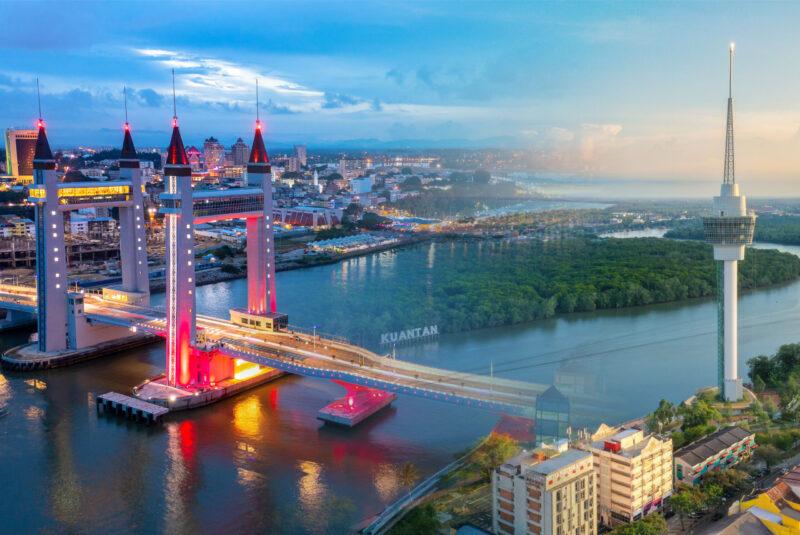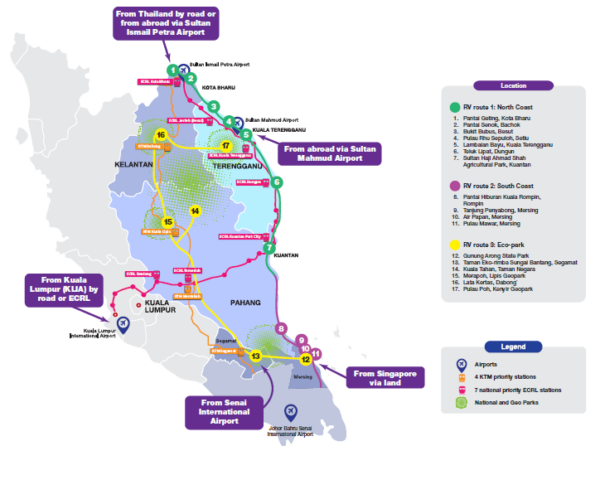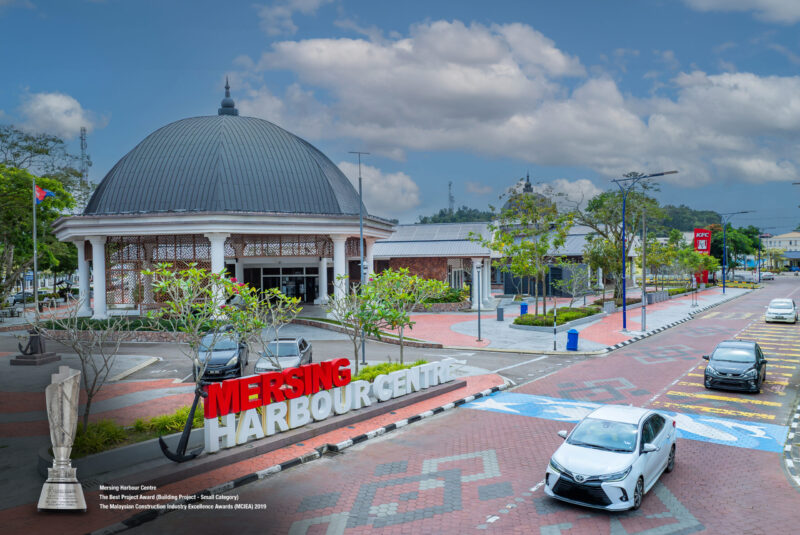
This site
is mobile
responsive

The East Coast Economic Region Development Council (ECERDC) continues its mission to drive balanced development across Kelantan, Terengganu, Pahang, and the districts of Mersing and Segamat in Johor, aligned with the MADANI Economy principles. Here’s how ECERDC made strides in 2024:
In 2024, ECERDC facilitated the realisation of RM13.4 billion in investments, exceeding its RM10 billion target. This achievement highlights ECERDC’s ability to attract high-impact investors that align with national economic priorities.
One standout milestone was the RM7.7 billion expansion of the Alliance Steel (M) Sdn. Bhd. facility at the Malaysia-China Kuantan Industrial Park (MCKIP), further solidifying the region’s status as a manufacturing hub for hard-to-abate industries.
With this achievement, ECERDC is now poised to reach its 2025 goal of RM49 billion in private investments, having already recorded RM44.7 billion in total realised investments from 2018 to 2024 — leaving just RM4.3 billion or 9% to be achieved.
The successful realised investments in the region contribute to over 3,165 job opportunities and 641 entrepreneurial ventures, showcasing ECERDC’s commitment to socio-economic development in the East Coast Economic Region (ECER).

Infrastructure development anchors ECERDC’s strategy to foster investments and drive economic growth. The ongoing Phase 4 expansion of the Kerteh Biopolymer Park (KBP), Terengganu underscores investor confidence and strengthens its position as a hub for sustainable industrial development. Building on the success of Phase 1, the SME Hub at KBP has achieved a remarkable occupancy rate and is expanding to add more SME units.
KBP’s success sparked further industrial projects, including a RM594 million investment for a new industrial park adjacent to KBP enhancing the region’s industrial ecosystem. The completed water pipeline from Kemaman to Gebeng addresses critical water supply issues, securing resources for industries and communities.
Upcoming 2025 projects include the Tok Bali Jetty Extension and Kelar Water Treatment Plant Phase 2 which will strengthen infrastructure and support local industries. Public facilities upgrades in Rantau Panjang and the Pantai Geting Integrated Tourism Zone, Kelantan and eco-tourism developments such as recreational vehicle (RV) infrastructure in Rompin, Pahang aim to boost regional tourism and socio-economic growth.
Conservation projects like the Turtle Conservation and Information Centre in Cherating, Terengganu and the Kuala Terengganu City Centre Promenade highlight ECERDC’s commitment to urban connectivity, environmental stewardship, and sustainable development.

ECERDC’s IPR-INTAN programme supports 2,428 participants across 1,589 acres through sustainable agriculture initiatives, including fertigation chilli farming, which incorporates Internet-of-Things (IoT) to improve yields and support self-sufficiency. This programme reduces reliance on imports while promoting sustainable farming practices.
The Endau-Mersing Fish Processing Park enhances Malaysia’s fisheries sector by offering processing and packaging facilities to increase the competitiveness of local seafood in domestic and global markets.
The Jemaluang Dairy Valley in Johor, set to begin production in 2026, strengthens food security and livestock value chains, with future expansion into meat production in Segamat, Setiu, Dungun, and Hulu Terengganu.
ECERDC is positioning the ECER as a leading eco-tourism hub through initiatives like the ECER Islands Master Plan (2023–2025) that focuses on sustainable island development across the region, with a commitment to preserving biodiversity, enhancing community well-being, and attracting eco-conscious travellers.
Strategic plans for investment facilitation are also being made in RV parks along scenic routes and RV assembly facilities, positioning the ECER as a leading RV tourism destination.
Rail-based tourism packages are being developed to offer unique journeys via the KTMB and planned ECRL lines, connecting travellers to coastal towns and lush jungles. With stops in culturally rich areas, these routes will boost local economies and preserve heritage. Restoration of cultural buildings near key stations ensures a blend of modern transport convenience and East Coast heritage.
The rapid development of the ECER highlights the need for sustainable growth, and ECERDC has been at the forefront of ensuring this balance. Key initiatives include the establishment of renewable energy zones, utilising solar and biogas technologies to power industrial parks like KBP, paving the way for green industrial growth.
Additionally, Renewable Energy and Carbon Capture, Utilisation, and Storage (CCUS) hubs are being planned in Kertih and Kuantan, driving low-carbon industrial growth while enhancing the region’s infrastructure and sustainability.
ECERDC targets RM55 billion in private investments between 2026 and 2030, contributing RM225 billion to the Region’s GDP. Its strategy focuses on four pillars: Food Basket, Tourism Destinations, Manufacturing, and the Marine Industry, supported by logistics and renewable energy as enablers.
The Food Basket initiative enhances agriculture, strengthening food security and export capacity through crops, dairy, beef production, and aquaculture.
Tourism growth is driven by sustainable projects like the East Coast Scenic Route for RVs, the Island Development Master Plan, and the Rainforest to Reef package, celebrating natural and cultural heritage.
In manufacturing, the focus is on high-value industries like EVs, green technologies, and specialty chemicals, with projects like MCKIP and KBP positioning the region as a leader in Industry 4.0. Expanding petrochemical capabilities in Gebeng and Kertih, and plans for carbon capture facilities reinforce ECERDC’s commitment to green manufacturing.
For the marine industry, efforts are focused on developing shipbuilding and ship repair capabilities and establishing the ECER as a premier maritime hub. This integrated approach ensures sustainable economic growth, environmental sustainability and community empowerment for a dynamic and inclusive ECER.
The ECER offers diverse investment prospects in tourism, manufacturing, agriculture, and green technology. Supported by ECERDC’s investor-friendly ecosystem and strategic infrastructure, the region is well-positioned for long-term partnerships aligned with Malaysia’s sustainable development goals.
For more information on investment opportunities, visit ECERDC’s website or contact at +603 8885 0038 or via email at [email protected].

Disclaimer: All figures in this article are under the purview of ECERDC and are for informational purposes only. For specific details regarding investments and initiatives, please refer to official ECERDC communications.